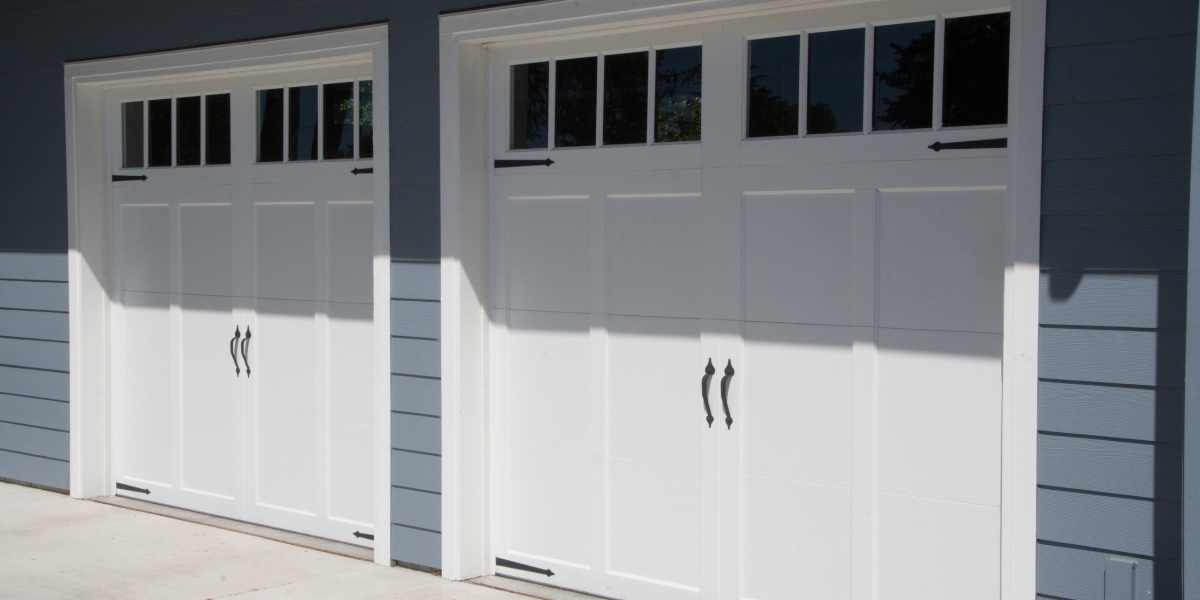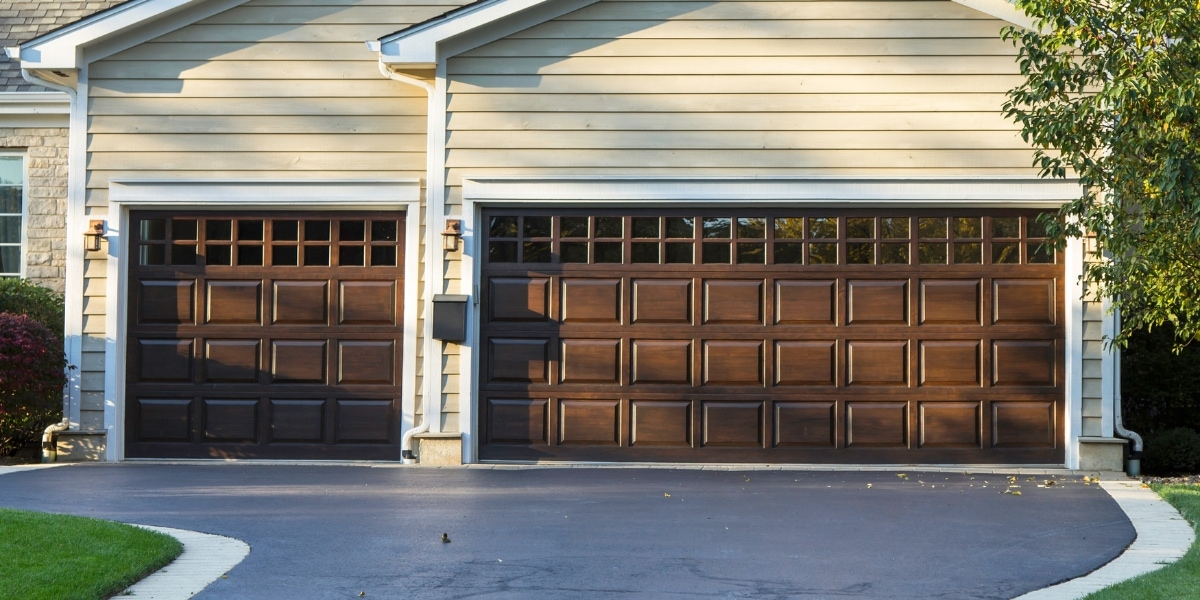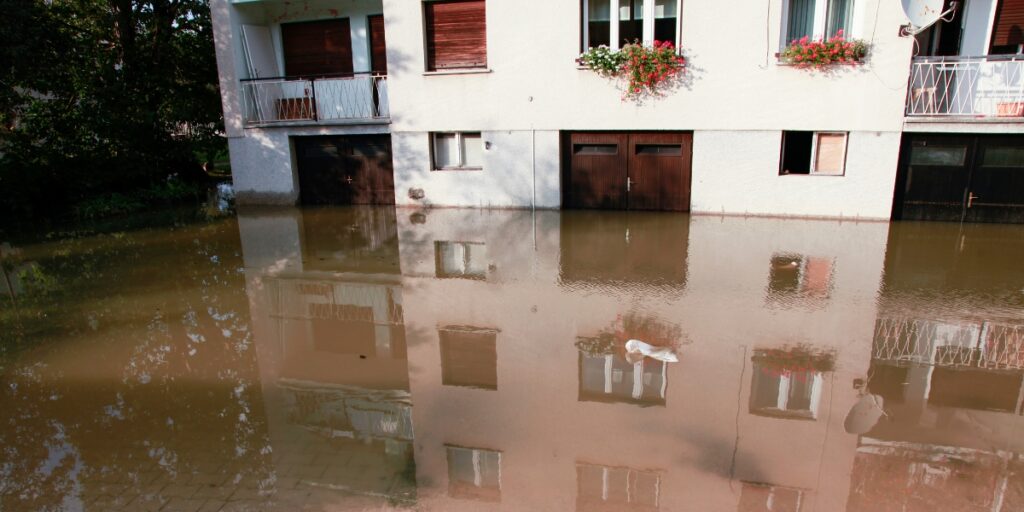Selecting the optimal garage door for your home is an important decision that requires carefully considering your local climate conditions and weather patterns. Many regions experience extreme weather swings, from arctic cold to intense heat, meaning your choice of door material can determine how well it withstands elements like temperature variations, humidity, coastal salt corrosion, snow load, and more. When considering garage door selection, it’s essential to also factor in potential future maintenance and garage door repair needs, ensuring a durable and reliable choice for long-term satisfaction
Choosing an unsuitable door not built for your climate risks early failure, weather damage, and higher energy bills from poor insulation. This guide provides a comprehensive overview of the specialized garage door selection process based on critical climatic factors like:
– Temperature extremes
– Sun and UV exposure
– Moisture and humidity
– Wind and storm resilience
– Snow load capacity
We’ll compare the unique strengths and weaknesses of standard garage door materials like:
– Steel
– Fiberglass
– Wood
– Vinyl
And offer recommendations showcasing which materials are optimal for different Canadian climate types.
Garage Door Materials Comparison
| Material | Cold Weather Performance | Heat Resistance | Cost | Insulation Value | Appearance |
| ———– | ———– | ———– | ———– | ———– | ———– |
| Steel | Excellent | Fair | Low | Moderate | Wide style options |
| Fiberglass | Excellent | Excellent | Moderate | High | Mimics wood look |
| Wood | Poor | Poor | High | Low | Beautiful, natural aesthetic |
| Vinyl | Fair | Excellent | Low | High | More limited styles |
Properly accounting for the impacts of sun, humidity, and severe cold and heat cycles will help lengthen the service life of your new installation and allow customized protection aligned to local weather patterns. Let’s review the key considerations in more detail…
Get to Know Your Garage Door’s Arch Nemesis: Weather!
When selecting a garage door, it’s crucial to think about who its biggest enemy will be – the weather! You may love cozying up inside during a raging blizzard or heat wave, but your garage door isn’t so lucky. It stands there directly facing the elements day after grueling day.
So, let’s break down what environmental factors we need to protect Rusty (our metaphorical garage door friend) from, shall we? (Hey, personifying objects helps make this stuff more fun!)
Frigid Temperatures:
If you live in an area with cold, arctic winter temperatures, Rusty needs his big boy pants to avoid, ahem, _shrinkage_. Serious insulation is critical here. We’re talking:
- At a minimum, a climate-rated R-10 insulation value (but R-20 wouldn’t hurt!)
- Tight weather seals around edges to prevent drafts
- Durable frames that won’t become brittle and crack
Steel and fiberglass doors fit the bill nicely.
I hear you, but modern steel doors are reinforced with harsh, enameled edges and thick insulation inside to withstand extreme cold, which is far better than natural materials like wood.
And let me tell you, Rusty would take a stylish, reinforced steel door over freezing his hinges off any winter!
Blazing Heat:
In hot climates, we worry less about Rusty shivering and more about him _melting_.
Heat conduction becomes a real issue when the oppressive summer sun beams down. Think:
- Blistering outdoor temps up to 120°F
- Radiant heat from direct sunlight
- A stifling hot garage interior
Yikes! Now Rusty needs:
- A high R-value insulation to block conductive heat flow
- Reflective coatings bounce sunlight rather than absorb it
- Excellent UV resistance in the finish to prevent material degradation
Vinyl and fiberglass doors rate well here. Their colorfast, insulating properties keep garages cooler in summer. And many modern vinyl doors mimic gorgeous wood looks without the maintenance!
Now let’s chat wind, rain, salt spray – the fun stuff! More on that in a bit…

Sizing Up Garage Door Building Materials
We’ve covered the hazardous weather elements that can wreak havoc on garage doors. Let’s review how those conditions impact building materials to make the ultimate climate-optimized selection!
I’ll spill the tea on the pros and cons of top contenders:
- Steel
- Fiberglass
- Wood
- Vinyl
And we’ll see how they stack up against cold, heat, wind, and rain. Drumroll please!
Strong and Stalwart Steel
Steel doors are budget-friendly and boast excellent cold-weather performance. Their sturdy galvanized steel construction stands up to heavy snow and ice with reinforced impact resistance.
Insulation levels around R-10, and thermal seals equip steel to block drafts and temperature swings. Though heat protection could be better, minor insulation upgrades provide a cost-effective solution for frigid climates.
Steel brings style without breaking the bank with customizable finishes from classic paneled designs to modern glass inserts!
Impressive Fiberglass
Fiberglass doors offer curb appeal reminiscent of gorgeous wood and robust weather protection. A durable fiberglass skin bonded over a steel framework creates an impact-resistant product perfect for cold and hot climates with extreme temperature swings.
The naturally insulating properties of Fiberglass earn R-values over 15 without even trying! Toss in weatherstripping; you have a fully fortified barrier ideal for seasonal shifts.
Fiberglass resists dents, warping, salt corrosion, and more – making it one of Rusty’s (our metaphorical garage door friend, if you recall) top choices!
When the Weather Gets Extreme, Things Can Get Ugly!
We’ve covered the core weather factors that impact garage door materials. But what about when things get extreme? Wild temp swings, raging winds, piles of snow? Sounds like a party!
Let’s discuss special climate considerations to take Rusty the Garage Door’s protection up a notch!
Seasonal Temperature Insanity
For regions with wild seasonal shifts from a brutal winter to a scorching summer, the rapid-fire temp changes can wreak havoc on doors as materials expand and contract. We have to look out for the following:
- Warping or cracking issues
- Draftiness from loosened seals
- Compromised insulation levels
Fiberglass is a great year-round performer, maintaining its sturdy form across temp swings. Vinyl also holds up nicely.
For budget steel doors, adding extra insulation add-ons specifically for summer and winter can bolster their defenses!
Wind Resilience
In hurricane/tornado territory, crazy windstorms can pressure garage doors and test their strength.
Key protections like:
- Reinforced wind load anchors
- Lateral and horizontal bracing
- Sturdy weatherstripping
Become CRUCIAL! Fiberglass doors tend to champion wind resistance tests, but steel and vinyl fortified with gust-busting features also excel in bracing.
Snow
Let’s remember the heavy snow! Places prone to getting BURIED have to ensure garage doors can handle dense frozen piles:
- Crushing weight loads
- Freezing/thawing moisture
- Clearing snow safely off the door
Steel and fiberglass doors with ample insulation and reinforced panels bear the brunt nicely compared to alternatives.
Gearing Up Rusty for Battle: Climate Resilience Upgrades!
It’s time to gear up regarding confrontations between Rusty the Garage Door and the relentless elements. Let’s chat upgrades and protective accessories to keep old Rusty kicking in ANY weather!
Getting Jacked: Insulation Add-Ons
Insulation becomes critical when the mercury dips into bone-chilling territory or soars to skin-melting heights. More insulation equals better efficiency and climate protection.
- Foam board insulation panels – Sturdy panels bonded right to the door for max R-value boosts
- DIY or pro-installed
- R-10 to R-20 value additions
- Perimeter insulation kits – Dense rubber seals fill the gaps around door edges, keeping cold and heat out.
- Quick DIY install
- Improved air sealing
- Internal Insulation Retrofits – Fills hollow steel door interiors with polyurethane foam. Not glamorous, but dang effective!
Layer the insulation up, I say! A cozy Rusty means significant savings on indoor heating/cooling costs over time.
Saving Skin: Protective Coatings
When salty coastal moisture, intense UV rays, pollution, and frigid ice/snow bombard garage doors, protective coatings preserve the beauty and integrity of materials.
- Clear weatherproofing topcoats – Crystal clear shields reflect sunlight, repel moisture, and prevent fading
- Maintain visibility of natural wood or stained doors
- Solar reflective paints – Metal/ceramic-infused paints deflect heat
- Supercharge insulation
- Mitigate extreme temp swings
- Corrosion-resistant coatings – Electrostatically bonded barriers reject coastal salt corrosion
- Ideal for oceanside climates
Feel free to get creative with functional and protective finishes! A snazzy-up Rusty battles the elements in style
Crank Up The Seal: Weatherstripping
Even tiny air leaks around garage doors add up QUICK. Upgrading weatherstripping seals the gaps, locks in heat during frigid winters, and keeps things cooler during scorching summers.
Check seals around:
- Corner joints
- Bottom panel
- Side frames
- Across the top header
Foam compression strips, dense rubber gaskets, vinyl sheeting, or brush-style astragal seals kick insulation up a notch! DIY applications are possible for handy homeowners, too.
Let’s get Rusty wrapped up tight and cozy! No more free air conditioning courtesy of Mother Nature.
Outfitting Rusty in His Climate Battle Armor
We’ve covered the climate factors threatening garage doors and upgrades to help them power through anything Mother Nature dishes out. Now, let’s outfit Rusty with his personalized climate battle armor!
It is time to gather ideal materials and fortifications to give Rusty a fighting chance by region. Let’s suit him up!
The Arctic Warrior
In frigid, snow-laden territories, Rusty needs:
- Steel or heavy-duty fiberglass construction
- Thermal insulation upgrades:
- Dense foam panels (R-10+)
- Perimeter seal kits
- Weatherstripping protection
- Sturdy impact bracing
- Heating elements to melt snow
This combo allows Rusty to laugh in the face of extreme subzero temps and heavy snow! He’ll stand sentinel through the winter, cozy inside while blizzards rage outside.
The Desert Trooper
In intensely hot, arid environments, Rusty calls for:
- UV-resistant Fiberglass or vinyl
- Insulation-boosting solar reflective coatings
- Ventilated double-paned window inserts
- Comprehensive perimeter weather seals
- Durable light colors reflect heat
Now Rusty can lean casually against the wall as sun beams bake the thirsty sands around him! Not even 100°F days can penetrate his cool, sealed-off interior. Take that nature!
Matching Rusty to His Climate Home
We’ve covered much about which garage door suits different extreme climate situations. Now, let’s zone in on optimal selections by region across Canada!
I’ll break down which construction materials pair best with:
- The cold north
- Coastal maritime places
- Hot & humid southern cities
Seal Rusty’s weatherproof fate with spot-on recommendations by the environment!
Rusty of the True North
In the great white frozen north where ice, snow, and frigid negative temps rule the land, Rusty needs ultra beefed-up protections for the long, unrelenting winter.
We’re discussing an insulated steel or fiberglass door rated for northern weather extremes. Key elements like:
- Thermal insulation values of R-20 or higher
- Multiple perimeter weather seals
- Heating elements to melt snow buildup
- Reinforced steel panels to withstand heavy snowweight
These allow a northern Rusty to…
* Maintain an above 0° interior even when *temperatures* plunge deep below – keep tools/vehicles thawed!
* Prevent icy winds sneaking through cracks – minimize heating bills
* Open easily after heavy snow storms thanks to heating tech
Rusty also wants to enjoy the pristine winter wonderland without it seeping indoors!
Maritime Rusty – Salty & Strong
Life gets turbulent on Canada’s east and west coasts. Rusty has to contend with storms blowing off the seas and wet, salty air eroding his structural integrity.
We need a door that’s:
- Corrosion-proof – fortified fiberglass skins or vinyl resists damage
- Wind resilient through rollers/bracing designed for gales
- Watertight – labyrinth trim/perimeter seals repel water ingress
Bonus points for:
- Impact-resistant skins to withstand blows from storm debris
- Ventilated panels allow airflow to dry things out
With specially designed maritime upgrades, coastal Rusty maintains peak form regardless of how hard the wind howls or waves crash mere meters away!
Southern Scorcher Rusty
Rusty, stationed in southern temperature extremes, requires materials that insulate against searing summer heat yet withstand dramatic thunderstorms.
We’re seeking a mix of durable Fiberglass or vinyl plus advanced insulation elements like:
- Reflective paint or metallic finishes to deflect heat
- Double-paned tinted windows limit sunlight
- Perimeter weather strips preventing humidity seepage
- Reinforced, insulated panels rated for hurricane winds
- Venting to allow airflow
This enables Rusty to chill through blistering hot days without becoming a greenhouse! And when extreme weather hits, he stands firm against fierce winds and pounding storms.

FAQS
What’s the best garage door for crazy Canadian winters?
I recommend a sturdy, insulated steel or reinforced fiberglass door for ultra-cold climates. Critical elements like an R-20+ insulation rating, thermal perimeter seals, weatherstripping upgrades, heating tech to melt snow buildup, etc., become essential for northern garage door survival!
How do I choose an ideal garage door for my area of Canada?
Excellent question! You’ll want to assess your local climate factors like temperature extremes, wind/storm patterns, humidity levels, and seasonal shifts and pick materials that align with insulation needs, weatherproofing, etc. I break it down in detail by region, from the genuinely chilly north to coastal maritime zones. Check it out!
Can vinyl or fiberglass garage doors handle heavy snow?
Most definitely! Modern impact-resistant Fiberglass, in particular, stands up very well to concentrated heavy snow. Their durable construction doesn’t crack or warp. Vinyl doors insulate nicely against the cold while withstanding snow weight better than wood or aluminum. Ensure any door has reinforced steel panels and insulation for added resilience!
Parting Wisdom from Your Climate-Conscious Pal
Whew, who knew garage door selection had so many weather-related factors to weigh? Now you’ve got the insider scoop, though!
Here are the core truths to remember:
- Local climate and weather extremes dictate ideal construction materials and insulation needs.
- There’s no universally “best” door – it’s all about customization to the environment.
- Upgrades like weatherstripping, heat-reflective paints, and heavy bracing transform even basic doors into climate-crushing warriors!
While this stuff can get technical, remember cold and heat flow, precipitation, wind, and humidity all interact with doors dramatically different than indoor walls. So special consideration is necessary during selection/installation if you want buttery smooth operation for decades without premature replacement!

